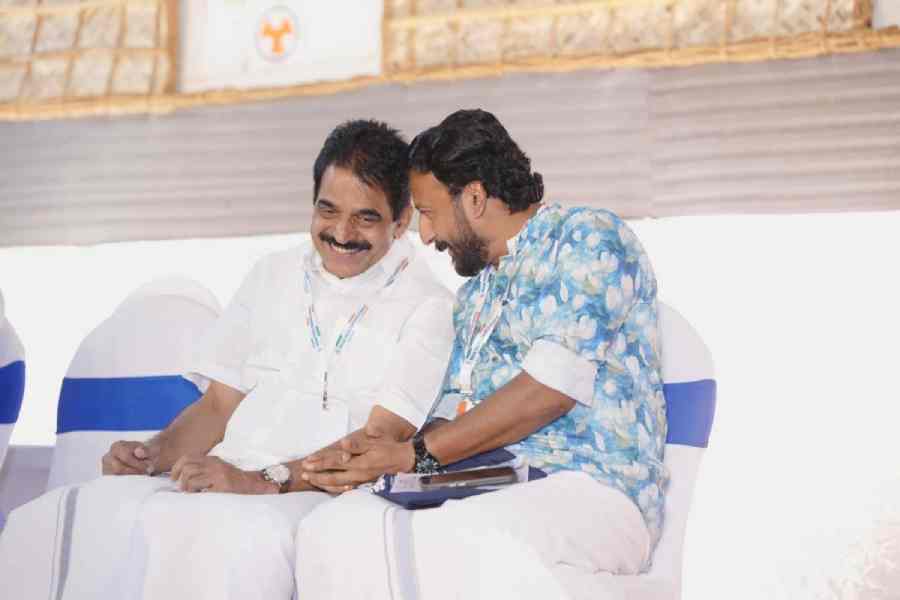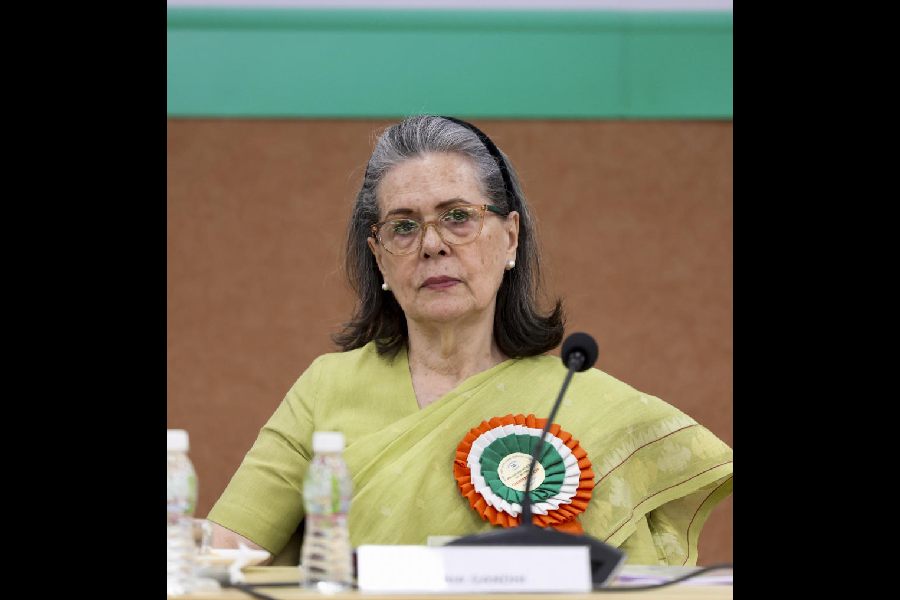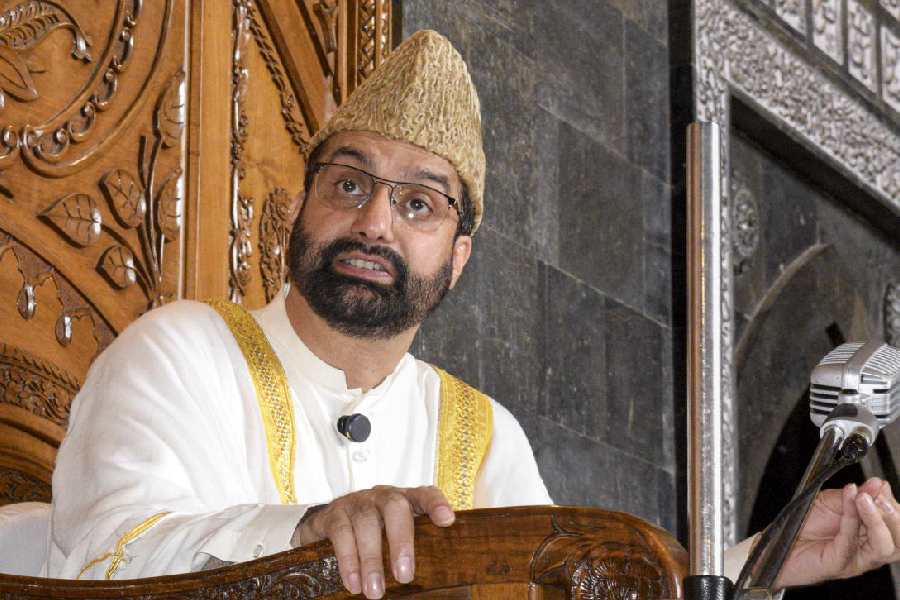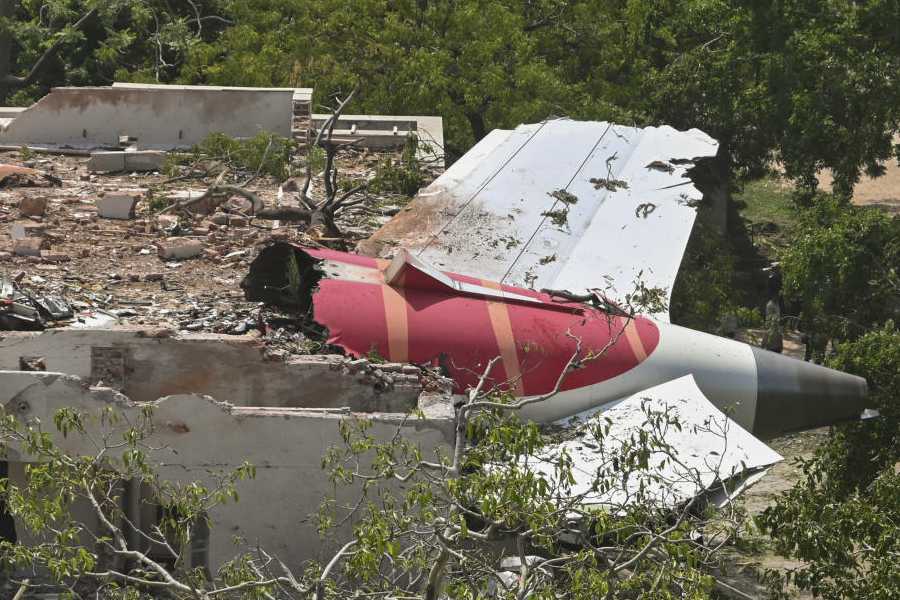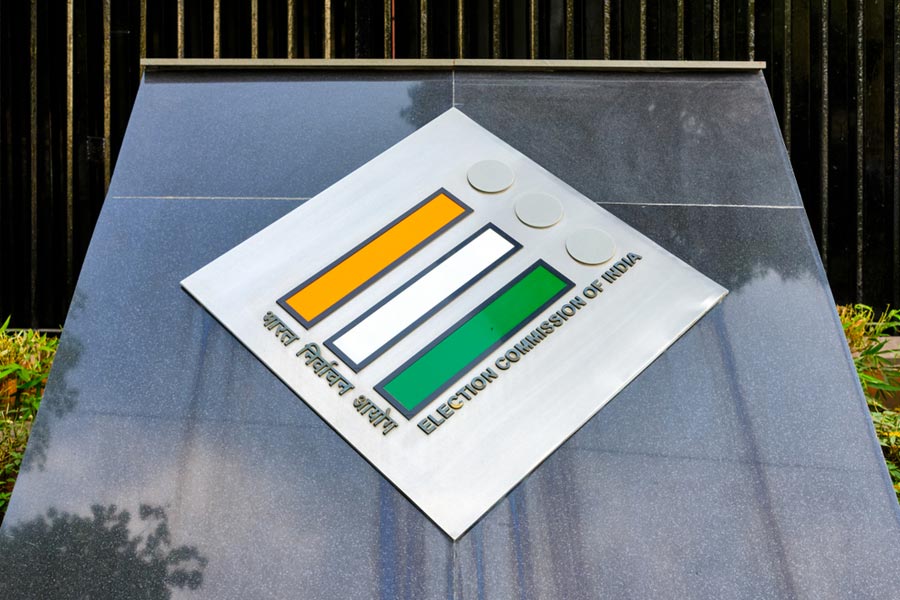 |
| A still from Desire Machine Collective’s film Residue, which was shot at a disused power plant near Guwahati and which is now part of the India Pavilion at the 54th Venice Biennale |
Office-goers on Berlin’s busy Unter den Linden street must have been startled by the sounds emanating from the Deutsche Guggenheim Museum.
They may have been more surprised to discover they were sounds from a sacred forest in distant Meghalaya being beamed out by speakers — and that they were part of a sound-based installation art work, Trespassers Will Be Prosecuted, created by Sonal Jain and Mriganka Madhukaillya’s The Desire Machine Collective (DMC).
DMC may not be an instantly recognised name in the splashy and rapidly growing world of Contemporary Indian art. But Guwahati-based Jain and Madhukaillya are emerging as two of India’s leading experimental artists. Over the last year, their art practice — they essentially make art works using film, video, photography, sound and multimedia — has travelled to prestigious museums abroad. And now, their work will be on show in India’s national pavilion at thepremier Venice Biennale that opened on June 4.
 |
| Desire Machine Collective does experimental art works using sound as a medium such as this sound-installation done on the façade of the Deutsche Guggenheim museum in Berlin, where they played sounds from a sacred forest in Meghalaya Photograph courtesy Desire Machine Collective |
It’s the first time that India’s had an official pavilion at the Venice Biennale and it’s titled Everyone Agrees: It’s About to Explode by curator Ranjit Hoskote. DMC’s sharing space with artists like Zarina Hashmi, Gigi Scaria and Praneet Soi. “Sonal and Mriganka have a very good understanding of new media, especially sound, which not many people are working with,” says Pooja Sood, artistic director, Khoj.
At Venice, DMC will show their 39-minute film Residue, shot at a disused thermal power plant near Guwahati that’s gradually being swallowed up by the surrounding forest. They first showed Residue in 2010 at the Deutsche Guggenheim and at the Lyon Museum in France.
Besides images of the plant, Residue’s soundtrack has Buddhist chanting and electronic sounds. “Most of the sound is not linked to the image,” says Jain. She says it’s hard to describe the work but it’s about “perception-image”. Adds Madhukaillya: “It is also about the whole cyclical process of creation and destruction and memory and how it is replaced.”
 |
| Artist couple Mriganka Madhukaillya and Sonal Jain are producing avant-garde works through their art practice, Desire Machine Collective Pix: UB PHOTOS |
These are ideas that deeply interest the two as do questioning, resisting and transcending all categories, boundaries and geographies. Indeed, they based themselves in Guwahati in 2004 because they were confronting “notions of borders, the politics of representation, how do we look and how do we produce and who is looking at our work”, says Madhukaillya.
They moved from Ahmedabad, where Jain was teaching photography and Madhukaillya was studying film at the National Institute of Design. At that time, with the Gujarat riots and their experience of conflict in the Northeast, they were concerned with ideas of the nation, the centre-periphery divide and issues like fascism and globalisation.
“We started off being very directly political but now it’s much more subtle,” says Jain.
Their early works included documentary-style videos like one called Aliyah on Mizoram’s Bnei Menashe Israeli tribe. But they’ve evolved since. So video works like 25/75, which alludes to a local lottery game and to the Khasi tribe’s belief that dreams correspond to numbers, were more “explorative” says Jain.
Also core to DMC are art projects like Periferry, which they founded on an abandoned ferry docked on the Brahmaputra in 2007, and a more recent one called A+type. Both are platforms where they can incubate artistic exchanges. Periferry, which was supported by Khoj, has hosted international and local artists and art residencies and seminars.
 |
| A seminar at Periferry, a platform for artistic exchanges that Jain and Madhukaillya have set up on an abandoned ferry in Guwahati Photograph courtesy Desire Machine Collec |
Similarly, A+type is a large bungalow, converted into a studio where artists can live and work. “DMC is a productive force. We are interested in initiating experiments to create new ideas and works,” says Madhukaillya.
They’re also interested in engaging with the community. That’s why they installed Trespassers on the Deutsche Guggenheim’s façade and replicated Periferry on Berlin’s River Spree.
But while DMC derives much of its material from its local context, it also seeks to transcend it. Take Trespassers. According to local belief, it’s forbidden to take out any object from Meghalaya’s sacred forest. But by placing the sounds elsewhere, the artists were questioning whether sound can be regarded as a material thing.
Given the experimental nature of their work, Jain agrees that “it is difficult” to sustain it. But they are undeterred. They have consciously chosen to stay in Guwahati, away from the big art centres. They have not even sold a single work, though they are now open to museums acquiring their creations. Possibly, the Venice Biennale is the start of a more high- profile phase.
Later this month Jain will showcase some works developed on Periferry at Berlin’s NGBK museum. Then, DMC will be part of the Indian Highway show in Rome. Besides, Residue will feature in shows in Mexico and Brazil later this year. And the Deutsche Guggenheim show will travel to New York in 2012.
Yet in all this, Jain and Madhukaillya believe they have to be “wary of the hype”. “It is very crucial to keep the seriousness of our practice,” says Madhukaillya. That means they will keep experimenting and trying to transcend all boundaries.





